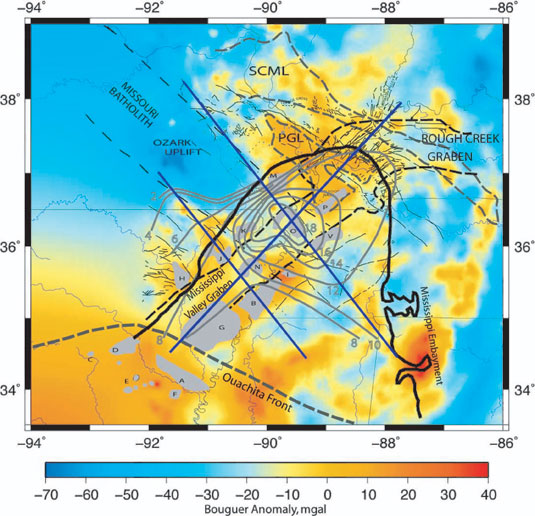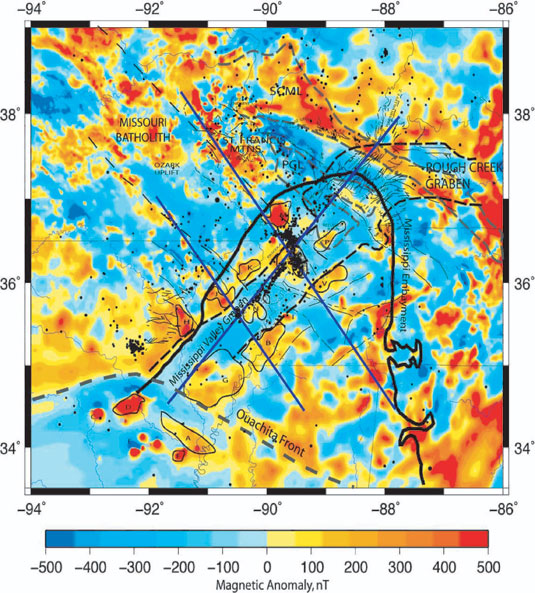Pieces of the Puzzle
Present Sediments of the ME hide a long, complex geological history.

The major known features associated with the northern ME are shown below superimposed on gravity and magnetic anomaly maps.
The ME is associated with a relative high in Bouguer gravity suggesting mass excess relative to the craton to the north and west. A prominent feature in the lower crust is the “rift pillow” which could be due to preCambrian to Cambrian crustal underplating/modification or be a relict structure from earlier times.

The ME is associated with a relative
high in Bouguer gravity suggesting
mass excess relative to the craton to
the north and west. A prominent
feature in the lower crust is the
“rift pillow” which could be due to
preCambrian to Cambrian crustal
underplating/modification or be
a relict structure from earlier times.
Magnetic anomaly map shows signatures of prominent syenitic plutons (probably of late Cretaceous age) and others of unknown age.

Mississippi Valley graben (MVG)
(Reelfoot rift) merges
with the Rough Creek graben.
Evidence for MVG primarily
comes from magnetics and
reflection studies. The
NMSZ occurs in the middle
of the MVG and is associated
with unusual plutons and
other fault structures like
the Blythville arch.
